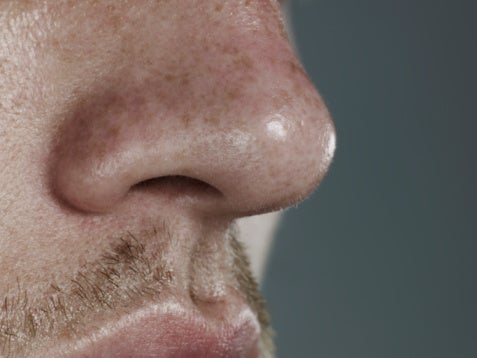‘Friendship at first sniff’ as study shows humans bond with people who smell the same
‘Perfect strangers may begin to interest us at first sniffs rather than at first sight alone’

People who share similar body odour are more likely to make friends with each other, according to a new study.
Just as dogs might sniff one another to determine a new friend’s gender, health or temperament, Israeli researchers have found that humans use smell in a similar, albeit in a more “covert” and subconcious, way.
The results of the study, conducted by researchers at the Weizmann Institute of Science in Rehovot, Israel, were determined by “smelling” clothes using a device called an “eNose”, which suggested that sense of smell is perhaps more central to human social interactions than previously thought.
The study’s authors said: “Because humans seek friends who are similar to themselves, we hypothesised that humans may smell themselves and others to subconsciously estimate body odour similarity, which, in turn, may promote friendship.
“Perfect strangers may begin to interest us at first sniffs rather than at first sight alone.”
Previous studies have suggested that humans tend to build friendships with those similar to them in appearance, background, values and brain activity. With this knowledge in mind, the researchers were keen to determine whether humans, like other terrestrial mammals, also use smell in social settings.
The team’s hypothesis was that, in subconsciously sniffing ourselves and others, people make subliminal comparisons, which lead us to gravitate toward people that have a similar smell.
To test this, the team recruited pairs of “click friends” (same-sex, non-romantic friends whose friendships had originally formed rapidly).
Body odour samples were then collected from the friends, which were used to conduct two sets of experiments to compare the samples with those collected from random pairs of individuals. The first involved the use of the eNose – fitted with 10 metal oxide sensors, each coated with a different material to detect certain chemicals – to assess chemical signatures of each click-friend pair’s smells on their clothing. The second asked a separate set of recruits to smell the two groups of body odour samples in order to assess any similarities.
Both experiments found that the pairs of click friends smelled signigicantly more like one another than they did to the random pairs.
But the team was keen to reduce the possibility that similarities in smell were a consequence of “click friendships,” rather than being a contributer, as sharing a similar odour can be derived from enjoying similar foods or experiences. This led to another round of experiments, in which the eNose was used to “smell” volunteers that were strangers, before asking them to engage in non-verbal social interactions in pairs.
One interaction method used was the Mirror Game, which required to recruits to stand face to face less than two feet apart and try to mirror each other’s hand motion.
After each interactions, the volunteers were asked to rate the individual opposite in terms of how much they liked them and how likely they were to form a friendship.
Subsequent results from the eNose found that the individuals who had more positive interactions smelled more like each other.
In entering the data into a computational model, the researchers found that the eNose could predict with 71 per cent accuracy which two individuals would have a positive social interaction.
As such, the team believe our body odour contains information - or “template” - which we can then subconsciously compare to our own smell blueprint.
The study concludes: “Previous body odour studies indeed support the idea that self-referent processing may mediate body odor identification in humans, as it does in other primates.”
Join our commenting forum
Join thought-provoking conversations, follow other Independent readers and see their replies
Comments
Bookmark popover
Removed from bookmarks